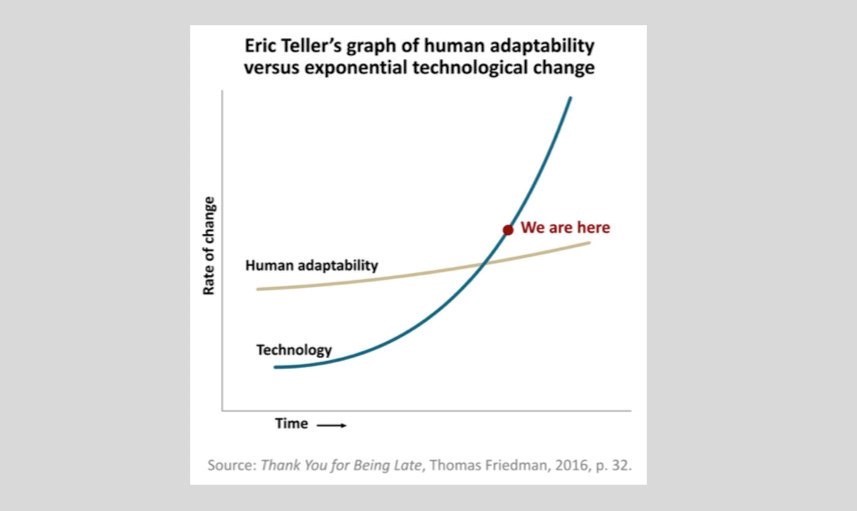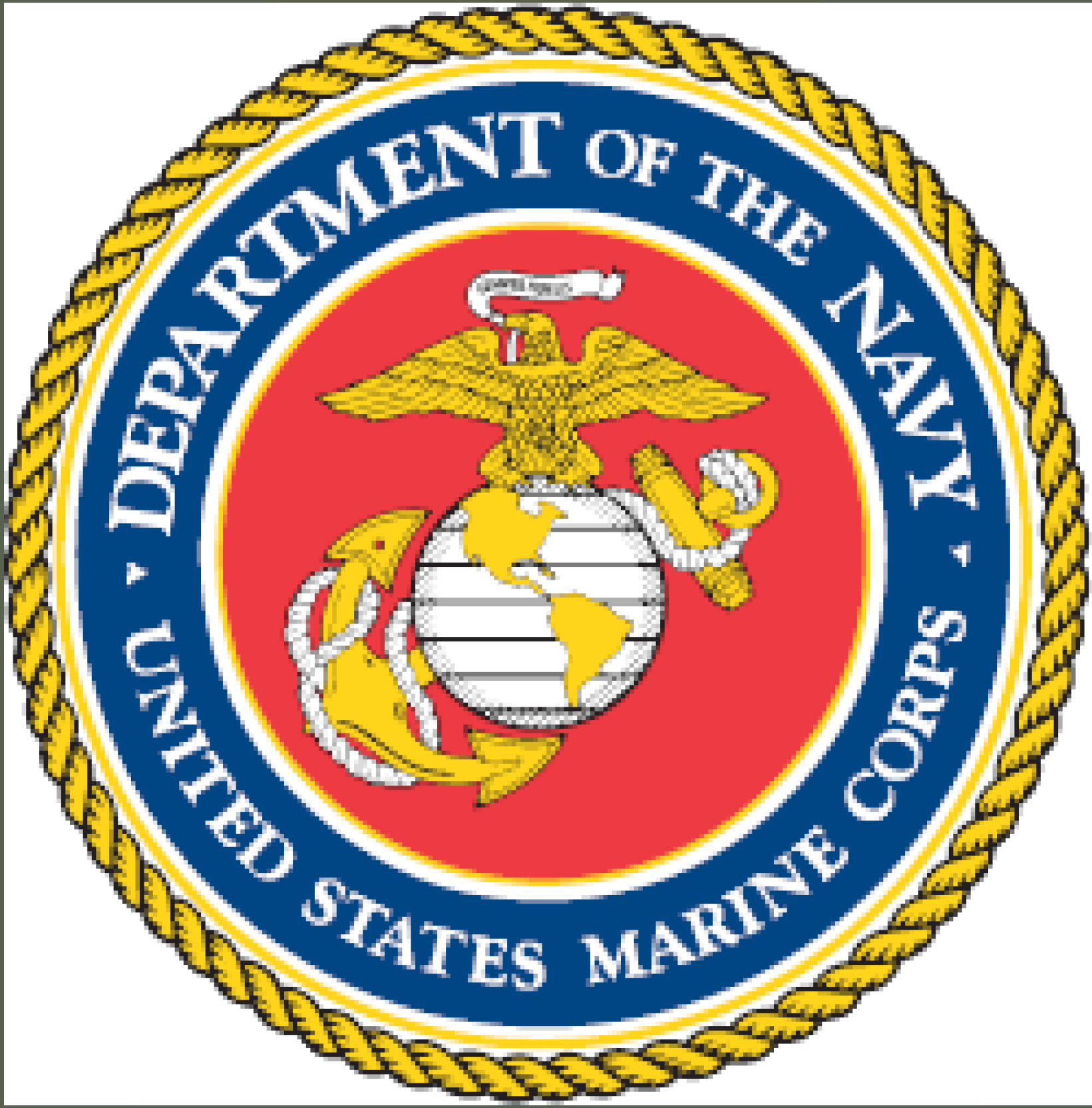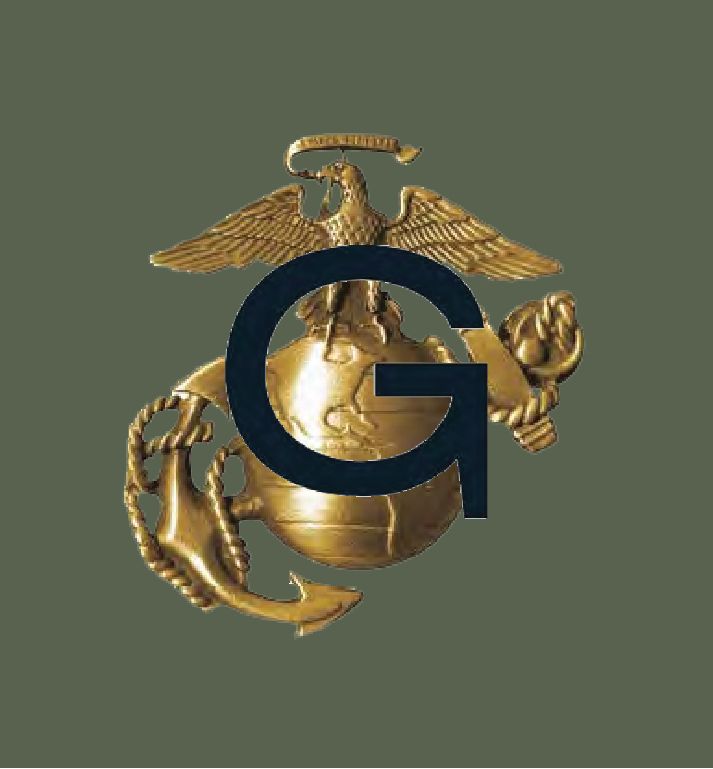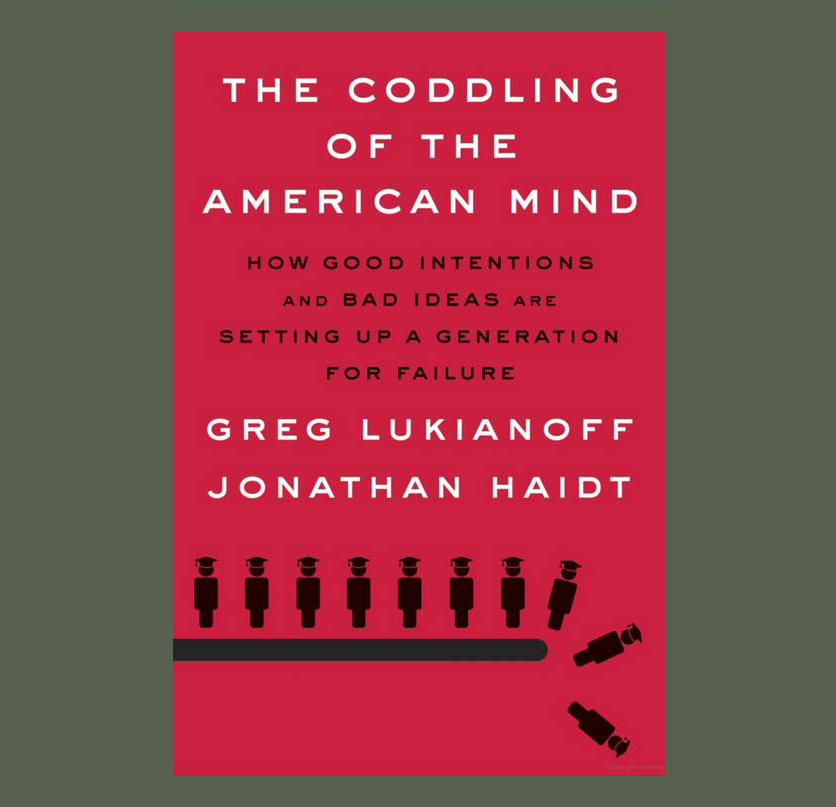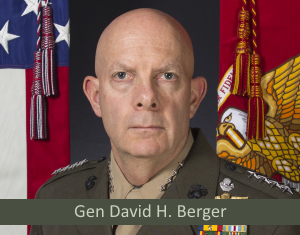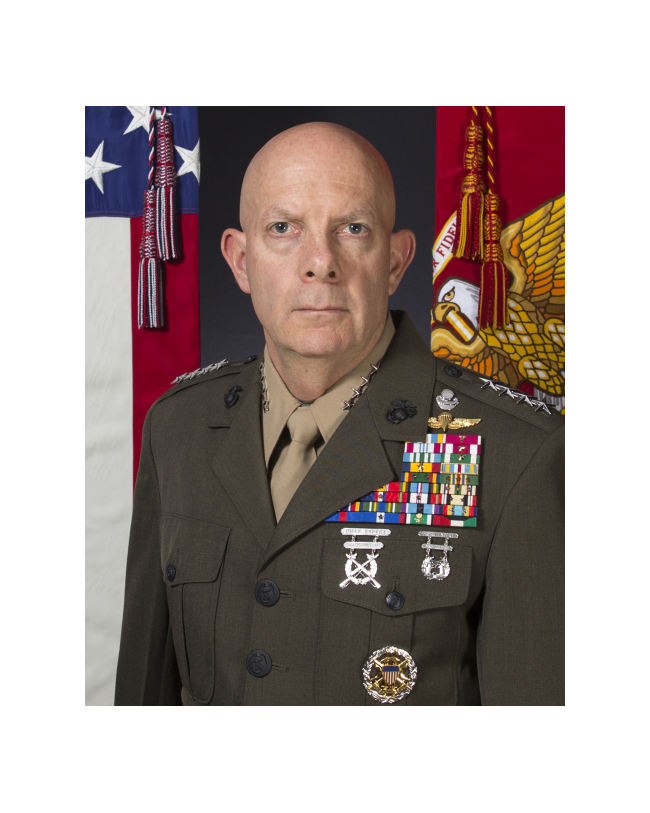by Capt. John J. Parry, USMC
U.S. strategic competitors and adversaries currently control global narratives – often detrimental to U.S. interests. While the U.S. military’s leadership has acknowledged it must adapt current methods to defeat opposition narratives, it continues to lose this battle of information.[1] In the case of Operation Valhalla in Iraq in 2006, insurgent manipulation of the narrative rendered a special forces battalion combat ineffective, convincing military leaders to pull the unit from the battlefield for a 30 day investigation into alleged misconduct.[2] Coalition forces lost the First Battle of Fallujah in 2004 after effectively ceding the narrative to insurgents.[3] A confusing and contradictory U.S. narrative during Vietnam led to the loss of political support and strategic failure.[4] Current military concepts recognizes planners must integrate narratives within operational design because the current doctrinal process for narratives has significant flaws.[5] The U.S. military must implement an improved doctrinal process to understand and use narratives to improve battlespace awareness, earn support, defeat competing narratives, and accomplish the mission.
Current military doctrine provides an incomplete process for integrating narratives in operations. Current doctrine: (1) Defines narratives as short stories that provide operational context and understanding; (2) Directs the use of higher headquarters guidance, policy, and directives to understand narratives in a given battlespace; and (3) Identifies that the current process fails to account for conflicting narratives widely accepted by neutral and adversarial stakeholders.[6] Stakeholders include friendly and adversarial forces as well as the local populace, non-government organizations, international audiences, the American public, and other relevant stakeholders who may affect or are affected by U.S. military actions in the battlespace.[7] The current process has three flaws. First, using only higher headquarters direction may synchronize the force but lacks a holistic approach for use of narratives. A relevant operational narrative accounts for all relevant stakeholders’ narratives. Second, a higher-level command’s macro-level view of an operation may not account for a subordinate command’s regional, tribal, and cultural issues. Third, the process does not align to any of the overarching formal military planning processes. While a higher headquarters’ narrative provides overarching guidance, subordinate commanders must know how to frame this within their battlespace. The proposed improvements to the process below: (1) Link narrative development with the overarching military planning processes such as Joint Planning, the Marine Corps Planning Process, or Military Decision Making Process; (2) Integrate all stakeholder perspectives and battlespace narratives in planning; and (3) Synthesize best practices from planning toward understanding a battlespace’s narratives and using them to develop an operational approach.[8]
An improved process for integrating narratives should begin with the initiation of mission analysis or problem framing, integrate with or parallel Intelligence Preparation of the Battlefield/Battlespace (IPB), and end upon conflict termination by an appropriate authority.[9] During IPB’s first step, an operational planning team (OPT) comprised of expertise across the warfighting functions should examine a command’s battlespace framework to identify relevant stakeholders.[10] Initial places to identify stakeholders include higher orders and intent as well as analysis of the political, military, economic, social, information, and intelligence (PMESII) operational variables in the battlespace.[11] Analyzing the operational variables of PMESII through the lens of six civil considerations characteristics of areas, structures, capabilities, organizations, people, and organizations can also assist with drawing out relevant stakeholders.[12] An OPT should then assess whether the command has the ability to affect stakeholders in its area of interest with its organic capabilities, which includes relevant stakeholders both inside and outside its assigned area of operations, to identify potential shortfalls required for the command to accomplish its mission.[13] A command should also establish a red cell and green cell during this time to analyze the battlespace through the lens of its various stakeholders to tighten up understanding of narratives in the battlespace.[14] These cells should parallel the OPT’s planning through the end of course of action development and wargaming to assist with understanding neutral and adversarial narratives in a battlespace.[15] Ultimately, this step should identify all relevant human and organizational terrain a command will need to communicate with and, potentially, what capabilities the command will require to ensure it can communicate during operations.
During the second step of IPB, the process should orient an OPT on the impact of stakeholder narratives in the battlespace.[16] The Department of State’s Interagency Conflict Assessment Framework (ICAF) can assist with drawing out relevant stakeholder narratives.[17] This process includes: (1) “Evaluate context of the conflict,” (2) “Understand core grievances and social/institutional resilience,” (3) “Identify drivers of conflict and mitigating factors,” and (4) “Describe opportunities for increasing or decreasing conflict.”[18] This process should identify potential objectives in the battlespace and focus on relevant stakeholders for the operation. Using a co-orientation technique known as the four ways of seeing, the OPT should analyze each stakeholder’s views and narratives of other stakeholders in a battlespace by asking: (1) “How does X view itself?” (2) “How does X view Y?” (3) “How does Y view itself?” (4) “How does Y view X?”[19] Understanding stakeholders’ narratives or viewpoints should identify exploitable opportunities and threats in the battlespace. Completion of this step should lead to an understanding of stakeholder narratives within the battlespace that contribute to the shape of U.S. military operations.
During IPB’s third and fourth steps, the OPT should identify how the adversary doctrinally uses narratives to achieve its objectives. The OPT should then determine how the adversary intends to doctrinally employ its narratives in the battlespace to meet its objectives (i.e. Facebook, pamphlets, “whisper” campaign, host-nation social media, etc.).[20] An OPT should generate from this a high value target list (HVTL) based on a prioritization of the stakeholders the adversary must influence to achieve its objectives.[21] Finally, the OPT should conduct a center of gravity / critical vulnerability analysis of adversary narratives in the battlespace.[22] This analysis should assist the OPT in identifying surfaces and gaps in an adversary’s use of narratives. The integration of these tools into narrative development should begin to shape a command’s operational approach in both the informational and physical domains of the information environment.[23]
During the final part of mission analysis or problem framing, a command should define its friendly narrative, which must begin with higher guidance, policy, and directives, and integrates relevant analysis from IPB.[24] This takes the form of a holistic written narrative that provides an understanding of how U.S. actions affect stakeholders in the battlespace.[25] A written operational narrative should account for applicable tasks from the Joint Concept for Integrated Campaigning, which identifies U.S. intentions in a given area, and the commander’s intent for the operation, which ensures the narrative supports the purpose of the operation.[26] A command should also conduct a center of gravity / critical vulnerability analysis to identify surfaces and gaps in friendly narratives in the battlespace.[27] An operational narrative should aid the ability of a command to assess whether physical actions align with the narrative to ensure proportionality, legitimacy, and purpose in operational design.[28]
Narratives also change based on the actions of all stakeholders and time. Then Major General James Mattis’s letters to the 1st Marine Division during Operation Iraqi Freedom provide an excellent example of complete operational narratives. Mattis adapted his narratives to the character of the battlespace to orient his troops on their current situation in 2003 and 2004 during two separate deployments in Iraq – the first narrative aimed at shaping a mindset for conventional warfare, and the second aimed at shaping a mindset for stability operations.[29] Like Mattis, a command should continuously assess narratives to ensure it adapts with the changing nature of the battlespace.[30]
Many military professionals acknowledge information as a warfighting function because senior leaders have directed it, but may not understand the value of narratives in a command’s operational design. Examples exist throughout history where successful battlefield leaders used narratives to shape operations. General Ulysses S. Grant used narratives to shape operations during the American Civil War. For example, Grant’s army entered Kentucky in late 1861 following reports of Confederate infiltration into the state. Because Kentucky declared state neutrality at the war’s onset, Grant declared to its citizens his intention to defend their interests against confederate invaders, a declaration accepted by state and Union leadership.[31] In shaping the narrative in Kentucky, Grant achieved his objectives by maintaining U.S. government policy, improving local civilian populace support, advancing U.S. government interests with Kentucky’s leadership, and defeating Confederate aims.[32] Following Grant’s example, a successful narrative aligns policy, perspectives, and physical actions, which must take priority; otherwise, a command risks failure.
Failure to align the reality of the U.S. campaign in South Vietnam with a cohesive narrative led to strategic defeat in the period of 1964-1973.[33] The U.S. military’s failure to align physical actions with the narrative and articulate the reality of the conflict in South Vietnam to the American public led to distrust, dissent, and loss of support.[34] The American public largely took issue with an overoptimistic narrative supporting the U.S. search and destroy attrition strategy, which the military designed to pacify the insurgency and deter North Vietnamese aggression – physical actions that arguably do not mix well with the idea of spreading democratic values.[35] Understanding and using narratives in operations, especially aligning physical actions, significantly contributes to success in the battlespace.
Some military professionals might argue against using a more complex process, if any, for integrating narratives into planning because of limited resources such as time or personnel during already constrained military planning processes. The recommended process improvements identify where, when, and how a planner should integrate narratives into the overarching military planning processes, which adds clarity to doctrine and reduces confusion during planning that would otherwise lead to mistakes and diversion of time, attention, and resources. The current process also fails to account for all relevant narratives or perspectives in the battlespace. Sun Tzu said it best: “If you know the enemy and know yourself, you need not fear the result of a hundred battles. If you know yourself but not the enemy, for every victory gained you will also suffer a defeat.”[36] Adversary, civilian, U.S. government agency, and non-government agency stakeholder actions can lead to success or failure in a military mission. An improved, albeit more complex, process also aligns narrative development with physical actions in planning, contributes to the conservation of time, and ensures successful operational design for operations.
Some believe using narratives does not have an immediate impact on tactical-level operations. In the First Battle of Fallujah in 2004, insurgent forces controlled the narrative.[37] During this operation, coalition forces attempted to seize the city without a coherent communication strategy to engage allies, the Iraqi Governing Council (IGC), reporters, and the populace.[38] The insurgents leveraged legitimate grievances to generate support among the local and international community, leading to insurgent victory and a coalition operational halt.[39] The coalition learned. In the Second Battle of Fallujah in 2004, the coalition used narratives to deny the insurgent its base of support and legitimize the operation among coalition stakeholders, which significantly contributed to success.[40] The military must integrate the use of narratives into operations at every level of war.
Above all, the U.S. military must adopt an improved process for using narratives in the battlespace. The proposed process improvements link narrative development with the overarching military planning processes, integrate all stakeholder perspectives and narratives into military operations, and integrate best practices into operational design. These improvements also improve operational design by providing a roadmap for aligning all relevant narratives at all levels of war and synthesizing all stakeholder narratives into a cohesive whole, which will support mission accomplishment and defeat adversary attempts to do the same. Military professionals should use, assess, and update this proposed improved process to ensure future doctrine places U.S. forces in a position to apply a cohesive narrative, align physical actions, and achieve victory.
End Notes:
[1] Headquarters U.S. Marine Corps, MCBUL 5400, “Establishment of Information as the Seventh Marine Corps Warfighting Function” (Washington, DC: Commandant of the Marine Corps, 2019), https://www.marines.mil/portals/1/Publications/MCBUL%205400.pdf?ver=2019-02-06-082807-103, accessed November 17, 2019; James Mattis, Information as a Joint Function (Washington, DC: Office of the Secretary of Defense), https://www.rmda.army.mil/records-management/docs/SECDEF-Endorsement_Information_Joint%20Function_Clean.pdf, accessed January 2, 2019.
[2] Joint Chiefs of Staff, Joint Concept for Operations in the Information Environment (Washington, DC: Joint Staff, 2018), 18, https://www.jcs.mil/Portals/36/Documents/Doctrine/concepts/joint_concepts_jcoie.pdf?ver=2018-08-01-142119-830, accessed January 14, 2018.
[3] Dr. William Knarr, et al., Seizing the Peninsula: A Vignette from the Battle for Fallujah (Alexandria, Virginia: Institute for Defense Analysis, 2011), 23.
[4] William M. Hammond, “The Tet Offensive and the News Media,” Army History, Winter 2017, 7-14.
[5] Joint Chiefs of Staff, Joint Concept for Operations in the Information Environment,viii-ix.
[6] Joint Chiefs of Staff, Joint Publication 3-61 Public Affairs (Washington, DC: Joint Staff, 2016), I-12, https://www.jcs.mil/Portals/36/Documents/Doctrine/pubs/jp3_61.pdf, accessed December 19, 2019.
[7] Ibid, I-10 to I-12, I-19.
[8] Center for Army Lessons Learned, MDMP Handbook (Fort Leavenworth, KS: Center for Army Lessons Learned, 2015), https://usacac.army.mil/sites/default/files/publications/15-06_0.pdf, accessed January 14, 2020;Joint Chiefs of Staff, Joint Publication 5-0 Joint Planning (Washington, DC: Joint Staff, 2017), V-4 to V-49, https://www.jcs.mil/Portals/36/Documents/Doctrine/pubs/jp5_0_20171606.pdf, accessed January 14, 2020; Headquarters, U.S. Marine Corps, Marine Corps Warfighting Publication 5-10 Marine Corps Planning Process (Quantico, Virginia: Deputy Commandant for Combat Development & Integration, 2018), 2-4 to 2-5, https://www.marines.mil/Portals/1/Publications/MCWP%205-10.pdf?ver=2019-07-18-151736-227, accessed December 19, 2019.
[9] Headquarters U.S. Marine Corps, Marine Corps Reference Publication 2-10B.1 Intelligence Preparation of the Battlefield/Battlespace (Quantico, Virginia: Deputy Commandant for Combat Development & Integration, 2015), 1, 1-1, https://www.marines.mil/portals/1/MCRP%202-10B.1.pdf?ver=2018-10-04-131000-610, accessed December 19, 2019.
[10] Joint Chiefs of Staff, Joint Publication 3-61, I-10; Headquarters, U.S. Marine Corps, Marine Corps Warfighting Publication 2-10 Intelligence Operations (Quantico, Virginia: Combat Development Command, 2016), 1-9, https://www.marines.mil/portals/1/Publications/MCWP%202-10%20(Formerly%20MCWP%202-1).pdf?ver=2016-06-06-120836-787, accessed January 11, 2020; Joint Chiefs of Staff, Joint Publication 3-61, I-10.
[11] Joint Chiefs of Staff, JP 3-61, I-12; Headquarters, U.S. Marine Corps, Marine Corps Reference Publication 2-10B.1 Intelligence Preparation of the Battlefield/Battlespace, 1-8, 4-29.
[12] Headquarters U.S. Marine Corps, Marine Corps Reference Publication 2-10B.1 Intelligence Preparation of the Battlefield/Battlespace, 4-29.
[13] Ibid, 3-3 to 3-4.
[14] Headquarters U.S. Marine Corps, Marine Corps Warfighting Publication 5-10 Marine Corps Planning Process, 2-6.
[15] Ibid, 2-6.
[16] Headquarters U.S. Marine Corps, Marine Corps Reference Publication 2-10B.1, 4-1 to 4-39.
[17] Office of the Coordinator for Reconstruction and Stabilization, Interagency Conflict Assessment Framework (Washington, DC: U.S. Department of State, 2009).
https://2009-2017.state.gov/documents/organization/187786.pdf, accessed December 8, 2019.
[18] Ibid, 2, 6.
[19] Command and Staff College Distance Education Program, 8903 Operational Art AY19 Coursebook (Quantico, Virginia: Marine Corps University, 2018), 98-99.
[20] Headquarters U.S. Marine Corps, Marine Corps Reference Publication 2-10B.1 Intelligence Preparation of the Battlefield/Battlespace, 1-4.
[21] Ibid, 5-29 to 5-30.
[22] Ibid, 5-29 to 5-30.
[23] Ibid, 5-9 to 5-20, 5-22,5-29.
[24] Joint Chiefs of Staff, Joint Publication 3-61 Public Affairs, I-12.
[25] Command and Staff College Distance Education Program, 8903 Operational Art AY19 Coursebook, 509-520.
[26] Headquarters U.S. Marine Corps, Marine Corps Warfighting Publication 5-10 Marine Corps Planning Process, 2-4 to 2-5.
[27] Headquarters U.S. Marine Corps, Marine Corps Reference Publication 2-10B.1 Intelligence Preparation of the Battlefield/Battlespace, 5-29 to 5-30.
[28] Joint Chiefs of Staff, Joint Publication 3-61 Public Affairs, I-12.
[29] James Mattis, et al., Call Sign Chaos (New York: Random House, 2019), 93, 119.
[30] Headquarters U.S. Marine Corps, MCWP 5-10, 1-4.
[31] Ron Chernow, Grant (New York: Penguin Press, 2017), 155.
[32] Joint Chiefs of Staff, Joint Concept for Integrated Campaigning (Washington, DC: Department of Defense, 2018), 8-9, https://www.jcs.mil/Portals/36/Documents/Doctrine/concepts/joint_concept_integrated_campaign.pdf?ver=2018-03-28-102833-257, accessed December 19, 2019.
[33] Hammond, “The Tet Offensive and the News Media,”7-14.
[34] Ibid,8-10.
[35] Ibid, 7-14; Victor Krulak, First to Fight: An Inside View of the U.S. Marine Corps (Anapolis, Maryland: Naval Institute Press, 1984), 194-195, 201-202.
[36] Sun Tzu, The Art of War (Ann Arbor, Michigan: J.W. Edwards Inc., 2007), 9-10.
[37] Knarr, Seizing the Penninsula: A Vignette from the Battle for Fallujah, 23.
[38] Ibid, 23.
[39] Ibid, 23.
[40] Chief Warrant Officer 4 Timothy S. McWilliams, et al., U.S. Marines in Battle: Fallujah November-December 2004 (Quantico, Virginia: U.S. Marine Corps History Division, 2014), 6; Knarr, Seizing the Penninsula, 21-22.
Bibliography:
Chernow, Ron. Grant. New York: Penguin Press, 2017.
Center for Army Lessons Learned. MDMP Handbook. Fort Leavenworth, KS: Center for Army Lessons Learned, 2015.
Command and Staff College Distance Education Program. 8903 Operational Art AY19 Coursebook. Quantico, Virginia: Marine Corps University, 2018.
Hammond, William M. “The Tet Offensive and the News Media.” Army History, Winter 2017.
Headquarters, U.S. Marine Corps. “Establishment of Information as the Seventh Marine Corps Warfighting Function.” MCBUL 5400. Washington, DC: Commandant of the Marine Corps, 2019. https://www.marines.mil/portals/1/Publications/MCBUL%205400.pdf?ver=2019-02-06-082807-103.
Headquarters, U.S. Marine Corps. Marine Corps Warfighting Publication 2-10 Intelligence Operations. Quantico, Virginia: Combat Development Command, 2016.
Headquarters, U.S. Marine Corps. Marine Corps Reference Publication 2-10B.1: Intelligence Preparation of the Battlespace. Quantico, Virginia: Deputy Commandant for Combat Development & Integration, 2015. https://www.marines.mil/portals/1/MCRP%202-10B.1.pdf?ver=2018-10-04-131000-610.
Headquarters, U.S. Marine Corps. Marine Corps Warfighting Publication 5-10: Marine Corps Planning Process. Quantico, Virginia: Deputy Commandant for Combat Development & Integration, 2018. https://www.marines.mil/Portals/1/Publications/MCWP%205-10.pdf?ver=2019-07-18-151736-227.
Joint Chiefs of Staff. Joint Concept for Integrated Campaigning. Washington, DC: Joint Staff, 2018. https://www.jcs.mil/Portals/36/Documents/Doctrine/concepts/joint_concept_integrated_campaign.pdf?ver=2018-03-28-102833-257.
Joint Chiefs of Staff. Joint Concept for Operations in the Information Environment. Washington, DC: Joint Staff, 2018. https://www.jcs.mil/Portals/36/Documents/Doctrine/concepts/joint_concepts_jcoie.pdf?ver=2018-08-01-142119-830.
Joint Chiefs of Staff. Joint Publication 5-0 Joint Planning. Washington, DC: Joint Staff, 2017. https://www.jcs.mil/Portals/36/Documents/Doctrine/pubs/jp5_0_20171606.pdf.
Joint Chiefs of Staff. Joint Publication 3-61 Public Affairs. Washington, DC: Joint Staff, 2016. https://www.jcs.mil/Portals/36/Documents/Doctrine/pubs/jp3_61.pdf.
Knarr, Dr. William, Major Robert Castro, John Frost, Colonel TracyKing, Mark Nutsch, Dianne Fuller, Carolyn Leonard, Mary Hawkins, Major General Thomas Jones, UMSC retired, and Colonel George Mauldin. Seizing the Peninsula: A Vignette from the Battle for Fallujah. Alexandria, Virginia: Institute for Defense Analysis, 2011.
Krulak, Victor H. First to Fight: An Inside View of the U.S. Marine Corps. Anapolis, Maryland: Naval Institute Press, 1984.
Mattis, James and Bing West. Call Sign Chaos. New York: Random House, 2019.
Mattis, James. Information as a Warfighting Function. Washington DC: Office of the Secretary of Defense, 2017. https://www.rmda.army.mil/records-management/docs/SECDEF-Endorsement_Information_Joint%20Function_Clean.pdf.
McWilliams, Chief Warrant Officer 4 Timothy S. and Nicholas J. Schlosser. U.S. Marines in Battle: Fallujah November-December 2004. Quantico, Virginia: U.S. Marine Corps History Division, 2014.
Office of the Coordinator for Reconstruction and Stabilization. Interagency Conflict Assessment Framework. Washington, DC: U.S. Department of State, 2017. https://2009-2017.state.gov/documents/organization/187786.pdf.
Tzu, Sun. The Art of War. Ann Arbor, Michigan: J.W. Edwards, Inc., 2007.



